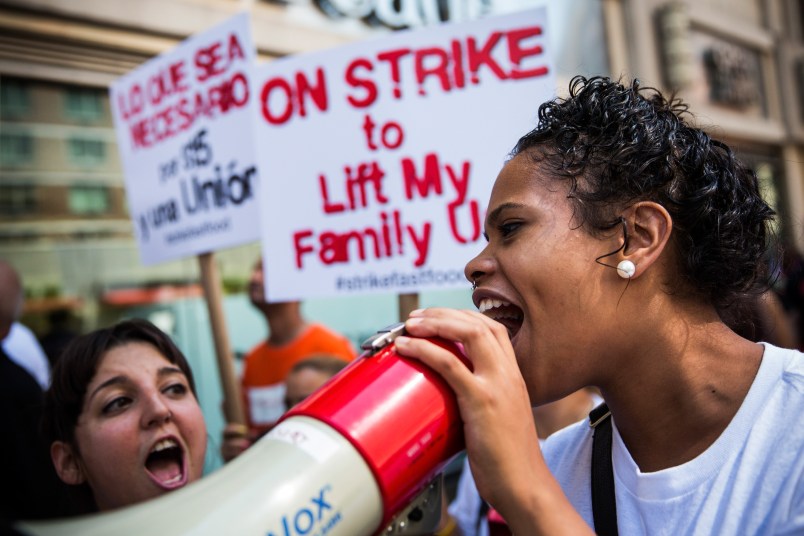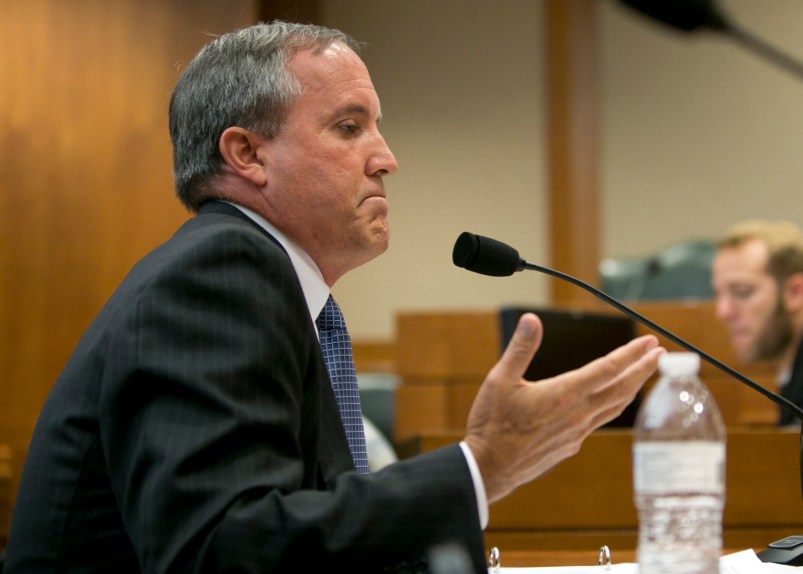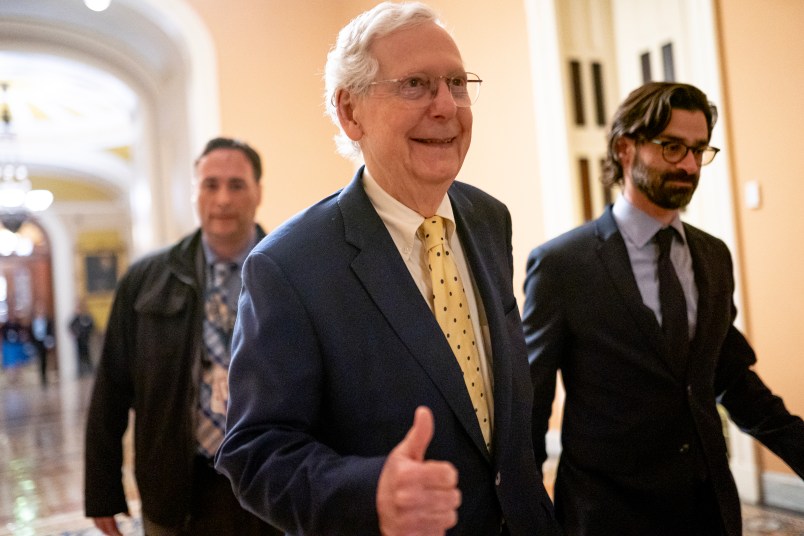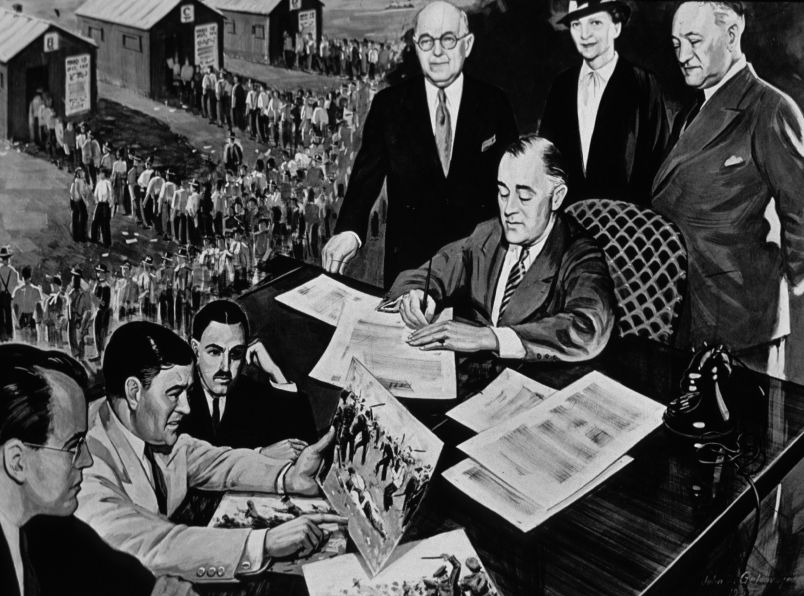The following is an excerpt from Steven Greenhouse’s book, Beaten Down, Worked Up: The Past, Present, and Future of American Labor, out today. It is part of TPM Cafe, TPM’s home for opinion and news analysis.
Labor leaders often suggest that there are easy, straightforward ways to reverse the decline in worker power and labor unions. Enact a card check law, they say — that would make it far easier to unionize workers. Move from company-by-company bargaining to the industry-wide bargaining that exists in many European countries — that would create higher standards for millions of workers in different industries.
To be sure, if those ideas were adopted, it would be a boon for workers and unions alike. But today’s political realities make it extremely hard to get Congress to enact union-friendly or worker-friendly measures.
Despite overwhelming public support for such worker-friendly ideas as increasing the minimum wage and enacting a paid sick days’ law, many in Congress seem allergic to both ideas. Ever since the National Labor Relations Act was enacted in 1935, Congress has rejected every push to make it easier for unions to grow, including efforts by Presidents Johnson, Carter, Clinton, and Obama. Time and again, Republicans have used the filibuster to defeat these efforts — most frustratingly in 1978, when a five-week filibuster torpedoed legislation that would have helped unionization campaigns by imposing tougher penalties on law-breaking companies.
Nowadays, the political landscape in Washington and many states is in many ways more hostile toward labor than at any time in decades. That landscape will have to change hugely if Washington is to enact any legislation that gives workers more power or helps unions. If we hope to create a more favorable environment for workers, we as a nation will first need to overhaul our campaign finance system. That system is dominated by ultra-wealthy, conservative (and vehemently antiunion) donors like the Koch brothers and Sheldon Adelson as well as powerful corporations and dark money groups.
In the 2016 election cycle, the Koch brothers’ network alone spent around $750 million — two to three times as much as all of organized labor. There was also heavy spending by conservative groups like the Club for Growth and the U.S. Chamber of Commerce. As we saw, corporations and business executives contributed $3.4 billion in the 2016 election cycle, sixteen times as much as labor. That of course makes lawmakers far more attentive to businesses’ concerns than to workers’ concerns.
Unfortunately, thanks to the Supreme Court’s rulings in Citizens United and other cases, the hallowed ideal of one person, one vote has given way to a lopsided situation where billionaires like the Koch brothers, Adelson, and Tom Steyer have thousands of times the political voice and power of a schoolteacher, store clerk, or steelworker. (Adelson and his wife donated more than $110 million to help Republicans in the 2018 campaign and more than $20 million to help Trump in 2016.) Everyone who believes in one person, one vote, and every workers’ advocate, should support a constitutional amendment to curb Big Money’s outsize influence in our elections.
Eighty-four percent of Americans agree that corporations and wealthy individuals have too much sway in our elections, with more than 84 percent of Democrats and 72 percent of Republicans backing restrictions on campaign spending. Nonetheless, amending the Constitution to limit Big Money’s influence will be a daunting challenge because billionaire donors will spend heavily to defeat such an effort and preserve their immense power.
Even without a constitutional amendment, we can and should expand public financing in political campaigns as widely as we can. This would reduce the domination of the wealthy and amplify the voice of average Americans. Under a measure that New York City voters approved in 2018, residents have their campaign donations matched eight to one in mayoral and city council races, while thirteen states give publicly financed grants to gubernatorial candidates once they achieve a threshold of support through small contributions. Seattle has a particularly innovative program, called Democracy Vouchers, that enables even low-wage workers to donate to campaigns. Voters are given four vouchers of $25 each that they can contribute to city council and mayoral candidates. Good ideas like these should be extended to presidential, Senate, and House campaigns.
John Sarbanes, a congressman from Maryland, has made a smart proposal to limit rich donors’ inordinate influence in House campaigns. Under his plan, if candidates agree not to accept donations of more than $1,000, every donation they receive of $150 or less from residents of their state would be matched six to one by public funds. This proposal, Sarbanes said, “addresses the need to build a movement to take government back from big money.” (The Democratic-controlled House passed a bill in March 2019 that includes a Seattle-like voucher experiment and Sarbanes’s six-to-one match for House and presidential campaigns.)
Much of Bernie Sanders’s 2016 campaign was a crusade against Big Money and its distorting influence on government. “The need for real campaign finance reform is not a progressive issue. It is not a conservative issue. It is an American issue,” Sanders said. “Our vision for American democracy should be a nation in which all people, regardless of their income, can participate in the political process, can run for office without begging for contributions from the wealthy and the powerful.”
When the National Labor Relations Act was enacted in 1935, its chief sponsor, Senator Robert F. Wagner, a Democrat from New York, saw it as a vehicle to give millions of workers more bargaining power vis-à-vis their employers. The act gave workers a federally guaranteed right to unionize; if a majority of employees at a workplace voted to unionize, the employer was required to recognize the union and bargain for a contract. The landmark law had another lasting result: giving workers far more power in politics. It enabled millions of Americans to pool their voices and dues money to help elect worker-friendly candidates and win laws like the minimum wage, Medicare, and the Occupational Safety and Health Act.
With union power in decline, American workers badly need new strategies to amplify their voices. Beyond the many worker centers that have sprouted up, one important way would be to create a major new national workers’ group — let’s call it the American Association of Working People (AAWP). When I first heard Janice Bellace, a professor of business ethics at the Wharton School, propose this idea in 2017, she said American workers could use a group like AARP to help speak for them and represent their interests (supplementing what unions are doing). This new association could fight for workers on myriad issues: raising the minimum wage, pushing for paid parental leave and sick days, and enacting stronger protections against sexual harassment. It could issue reports and hold conferences on the dangers in particular industries, like construction and mining, or on how non-compete clauses and industry oligopolies limit opportunities and pay increases for workers. It could add a powerful voice that helps counter business lobbies like the U.S. Chamber of Commerce and the National Restaurant Association. Basic membership in this organization should be affordable, perhaps $50 or $75 a year, with sustaining memberships of $200. If a million Americans join, it could become a potent new pro-worker voice.
To bring more attention to workers’ concerns, some of the nation’s leading advocacy groups should create departments that focus on worker issues (or expand such departments if they already exist). Here I’m thinking of groups like the National Organization for Women, the NAACP, Planned Parenthood, AARP, the American Civil Liberties Union, and UnidosUS (formerly the National Council of La Raza). Environmental groups like the Sierra Club and the Environmental Defense Fund could establish departments that focus on environmental health and safety for workers. It would be wonderful if the National Rifle Association focused on worker issues, too.
The nation’s news media should devote more resources to reporting on worker matters. Few news organizations still have full-time workplace reporters. The New York Times, The Washington Post, ProPublica, Bloomberg, BuzzFeed, and The Huffington Post still do, but not The Wall Street Journal, the Los Angeles Times, the Chicago Tribune, or the Associated Press or most daily newspapers — all when there are hundreds of business reporters and nearly constant reports on every blip in the stock market. If workers face major problems and no one reports on them, that will often mean workers’ interests are ignored.
A few advocacy groups have developed inventive ways to use the internet to fight for workers. OUR Walmart, an association of over ten thousand Walmart workers, has developed a mobile phone app, WorkIt, that uses IBM’s Watson artificial intelligence bot to answer workers’ questions on issues like Walmart’s parental leave or sick days policies. OUR Walmart’s leaders say WorkIt helps them identify what’s bothering Walmart workers and can be used to mobilize workers to push Walmart to improve policies.
Coworker.org has been by far the most successful group in harnessing new technologies to help workers. Coworker.org has used online petitions to get well-known companies to change unpopular policies — for instance, it got Netflix to improve its parental leave policy. After Starbucks barred employees from having visible tattoos, Kristie Williams, a barista, started a petition urging the company to drop that policy. Helped by Coworker.org, Williams got twenty-five thousand baristas worldwide to sign on, and Starbucks soon reversed itself. After that victory, the network of Starbucks baristas won improvements on scheduling and paid parental leave and persuaded Starbucks to stop prohibiting employees from having unusual hair colors like blue and purple. One Coworker.org petition helped persuade Uber to adjust its app to make tipping available to all U.S. drivers, while another called on Comcast to crack down on sexual harassment at its call centers. Coworker.org is strategizing to figure out how to use the internet to rally and lift workers in bigger and more important ways, perhaps to unionize. It played a big, behind-the-scenes role in organizing the November 2018 protest by twenty thousand Google workers against sexual harassment. Coworker.org may have only a fraction of the power that Walter Reuther’s UAW once had, but every innovative idea helps.
Steven Greenhouse was a reporter for The New York Times from 1983 to 2014 and covered labor and the workplace for nineteen years there. He also served as a business and economics reporter and a diplomatic and foreign correspondent. He has been honored with the Society of Professional Journalists Deadline Club award, a New York Press Club award, a Gerald Loeb Award for Distinguished Business and Financial Reporting, and the Hillman Prize for Book Journalism for his last book, The Big Squeeze: Tough Times for the American Worker.









